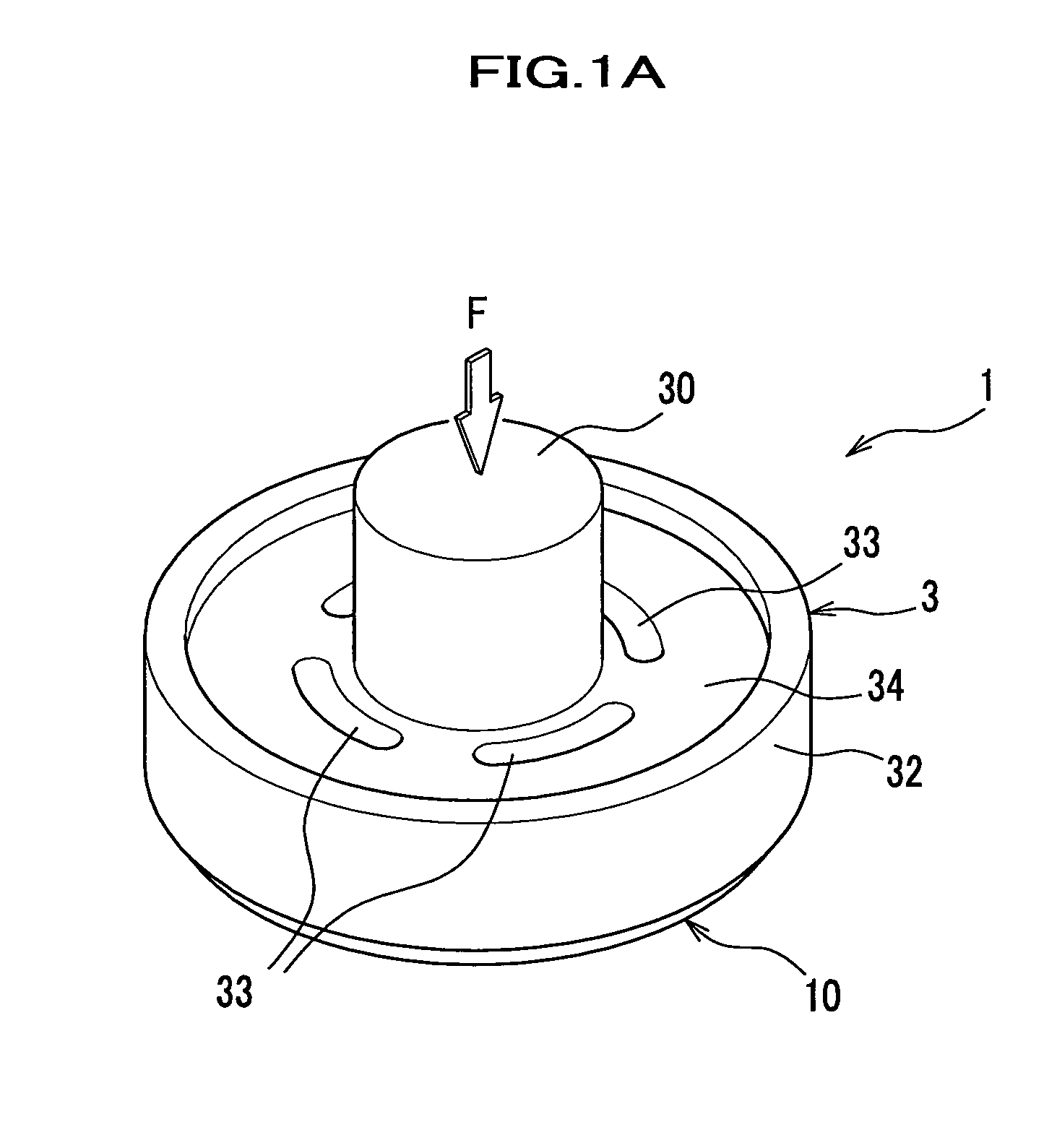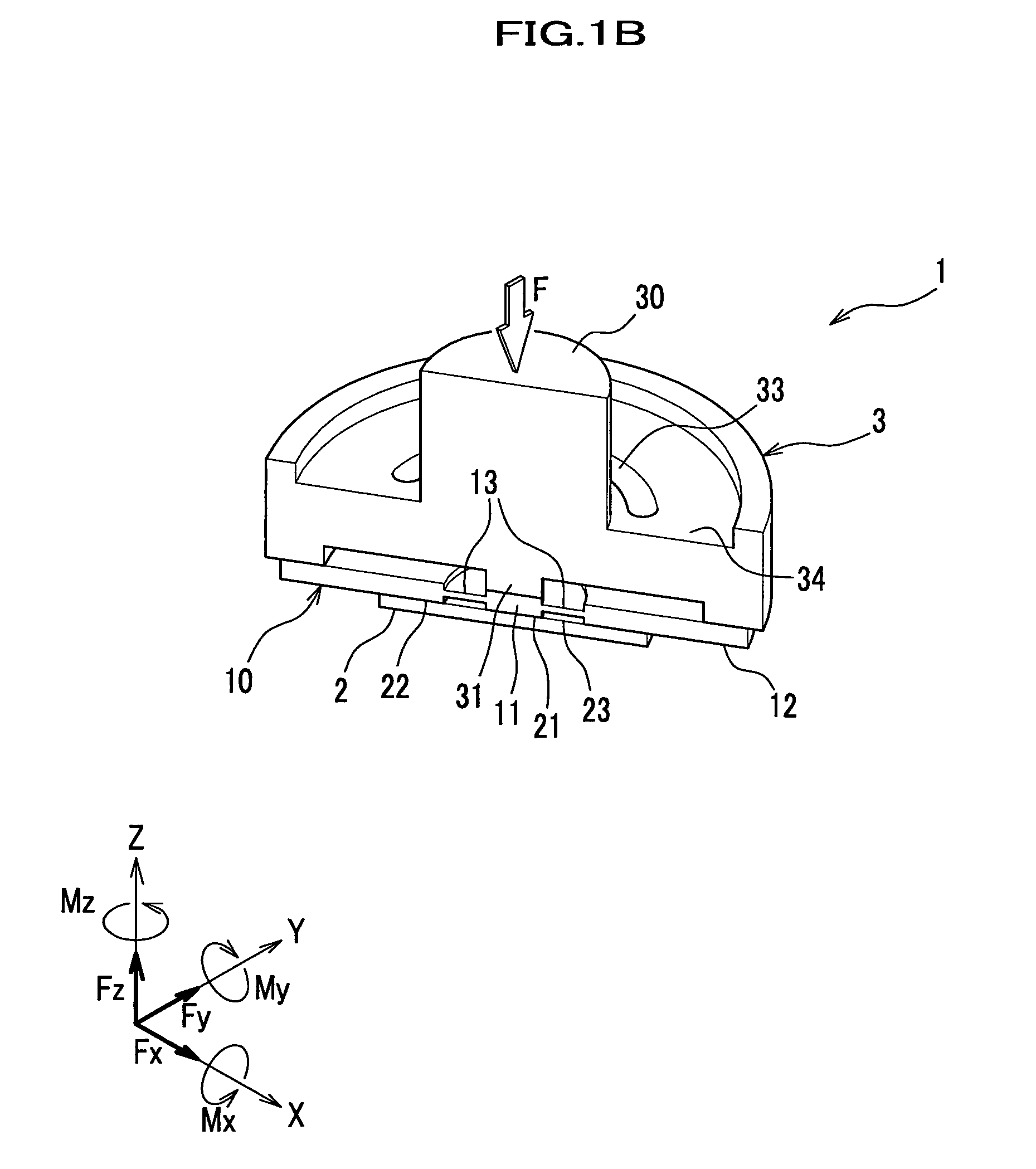Force sensor
a technology of force sensor and sensor, which is applied in the direction of force measurement using piezo-resistive materials, instruments, force measurement apparatus, etc., can solve the problems of deteriorating detection accuracy, poor adhesion, and damage to the force sensor chip, so as to facilitate the positioning of glass members and prevent the reduction of joint strength
- Summary
- Abstract
- Description
- Claims
- Application Information
AI Technical Summary
Benefits of technology
Problems solved by technology
Method used
Image
Examples
first embodiment
[0073]An entire framework of a force sensor according to the present invention will be describer in detail with reference to FIGS. 1-3.
[0074]It should be noted that in the drawings to be referred, for the purpose of convenience in explanation, an attenuator, a glass beam and the like are simplified, and configurations and positional relationships may be schematically and conceptually expressed. In addition, in the drawings, degree of strain and the like may be exaggeratingly expressed.
[0075]A force sensor 1 according to the present invention is configured in a shape of a circular plate with an input portion 30 protruding therefrom (see FIG. 1A), and includes a force sensor chip 2 for detecting hexaxial components of a transmitted external force F (see FIG. 1B) and an attenuator 3 for fixing the force sensor chip 2, attenuating the external force F and transmitting the attenuated external force F to the force sensor chip 2. The force sensor chip 2 and the attenuator 3 are joined thro...
second embodiment
[0156]In the glass member according to the present invention, as shown in FIGS. 15A and 15B, in each of four glass beams 13′, there is formed a discontinuous portion 19 that blocks the transmission of the external force F between the first glass member 11 and the second glass member 12. The discontinuous portion 19 is formed by cutting a middle portion of the glass beam 13′ with laser beam (by laser beam cutting).
[0157]Specifically, the discontinuous portions 19 can be formed through the buffer holes 33 (see FIG. 1) of the attenuator 3, or as shown in FIG. 16, first by forming small holes 19a in the disc portion for a laser beam cutting operation, and cutting the glass beams 13′.
[0158]It should be noted that the technique of forming the discontinuous portion 19 is not limited to the laser beam cutting, and it may be formed by mechanically cutting with a cutter or by breaking the glass beam 13′ with a load applied to the glass beam 13′. Also in these cases, the buffer holes 33 of the...
PUM
| Property | Measurement | Unit |
|---|---|---|
| external force | aaaaa | aaaaa |
| joint strength | aaaaa | aaaaa |
| size | aaaaa | aaaaa |
Abstract
Description
Claims
Application Information
 Login to View More
Login to View More - R&D
- Intellectual Property
- Life Sciences
- Materials
- Tech Scout
- Unparalleled Data Quality
- Higher Quality Content
- 60% Fewer Hallucinations
Browse by: Latest US Patents, China's latest patents, Technical Efficacy Thesaurus, Application Domain, Technology Topic, Popular Technical Reports.
© 2025 PatSnap. All rights reserved.Legal|Privacy policy|Modern Slavery Act Transparency Statement|Sitemap|About US| Contact US: help@patsnap.com



